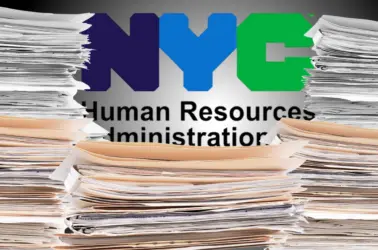Brooklyn is now among the top three U.S. counties experiencing the most significant population outflows from flood-prone areas, according to a new national analysis by Redfin. Kings County, which encompasses all of Brooklyn, saw 28,158 more residents move out than in last year, ranking just behind Miami-Dade County in Florida and Harris County, Texas.
The Redfin report marks the first time since 2019 that flood-prone areas in the U.S. have lost more residents than they’ve gained. Nationwide, high-flood-risk counties lost nearly 30,000 more people than they attracted, while low-flood-risk counties saw nearly 36,000 more people move in—the largest net inflow since before the pandemic.
Brooklyn’s Role in a National Shift
The report identifies Brooklyn’s population loss as part of a larger pattern among major coastal urban hubs like Miami, Houston, and New Orleans—all facing rising housing costs, increasing climate risk, and mounting insurance burdens.
Redfin’s analysis, based on U.S. Census Bureau migration data and First Street Foundation flood-risk scores, defines “high-risk” counties as those where more than 23.7% of homes face high flood risk. In Brooklyn, dense coastal development and aging infrastructure have made flood preparedness an ongoing challenge—especially as severe storms and coastal flooding become more frequent.
Housing Costs, Insurance, and Climate Concerns Driving Moves
Redfin agents in affected regions cite a mix of economic and environmental pressures pushing residents out.
“A lot of people moved to Miami during the pandemic, thinking life would be a vacation,” said Ozzie Linares, a Redfin agent based in South Florida. “Many of those people are now leaving because they’ve realized living here isn’t a piece of cake—the city has become increasingly expensive and extreme weather events are on the rise.”
Linares shared that his own homeowner’s insurance premium rose to $6,700 per year from less than $2,000 two years ago, and his flood insurance premium jumped from $400 to $1,250. These surging costs, combined with high property taxes and special assessments, are pricing many residents out of coastal markets.
The same pressures are playing out in urban centers like Brooklyn, where insurance and maintenance costs are rising alongside property values, adding to affordability challenges that already affect renters and homeowners alike.
A National Pattern of Movement
Beyond Brooklyn, Miami-Dade County saw the nation’s largest outflow, with 67,418 more people leaving than arriving, followed by Harris County, Texas (home to Houston), which lost 31,165 residents on net.
Houston, where roughly one in three homes faces high flood risk and all homes face extreme heat risk, has also seen residents relocate due to climate and affordability issues. “People are always nervous about flooding in Houston, but it’s no longer the top concern,” said Roze Swartz, a Redfin Premier agent. “Now it’s the extreme heat, politics, and rising property taxes that are driving people away.”
While some residents are leaving states like Texas and Florida entirely, others are moving to nearby suburban counties with lower flood risks and slightly more affordable housing options.
Immigration Offsets Some Losses—For Now
Interestingly, Redfin’s data shows that while many flood-prone areas lost domestic residents, some still gained overall population due to international migration. Miami-Dade County’s population grew 2.3% in 2024, fueled by 123,835 international migrants—the highest number of any U.S. county.
However, Redfin Chief Economist Daryl Fairweather warned that political shifts could change this pattern. “Many of the Americans who left flood-prone areas last year were replaced by immigrants,” Fairweather said. “But with the government cracking down on immigration enforcement, some immigrants are now hesitant to leave their homes during storms because they are afraid they could be detained.”
Brooklyn at the Crossroads of Climate and Affordability
As flood risks, insurance costs, and housing prices rise nationwide, Brooklyn’s inclusion in Redfin’s top-three list underscores the borough’s vulnerability—not just to climate threats but to the economic pressures those threats create.
While population decline may appear gradual, it raises long-term questions about the sustainability of living in New York City’s low-lying neighborhoods, where infrastructure, affordability, and resilience planning intersect.
To view Redfin’s full report, including national charts and county-level migration data, visit Redfin’s report here.


















Leave a Reply
You must be logged in to post a comment.